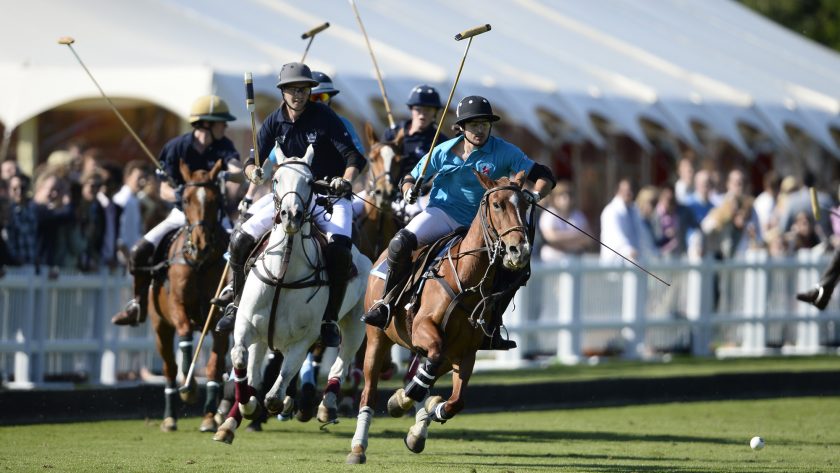Imagine being on an area of lush grass that is nine times the size of a football field. An agile thoroughbred is standing beneath you, eager to gallop at your signal. Your left hand is used to thread two sets of reins, and your right hand is used to hold four feet of bamboo that has been carefully prepared. You and seven other riders launch out after a white plastic ball at over 40 mph as the umpire blows his whistle, heading towards the goal.
Dressage, jumpers, racing, roping, and other sports are all broadcast on TV during the summer. Polo, however, is one of the equestrian sports that goes a bit less unnoticed. Polo is a fairly entertaining sport, as Nina recently found. Where did it begin, though? The only people who can afford to play it are British royalty. Why on earth are polo ponies being cloned? To answer the questions of what, when, where, and why polo is played, below is a basic description of the sport.
What is polo, exactly?
Many already know that polo is a quick game played on horses with a goal being struck with a mallet. There are subtle differences in the rules depending on whether it is played on a field or in an arena. In field polo, which Princes William and Harry and others play, each team normally consists of four players. Riders switch saddles between every seven-minute segment of play, known as a “chukker.” Polo ponies can sprint one or even two miles during high goal matches, which often have six chukkers, thus they are always given a break after playing.
Polo isn’t merely practiced while mounted. If horses seem too tame an option, there is also elephant polo, bike polo, and camel polo.
When did it first begin?
One of the world’s earliest team sports may be polo. Though the precise beginning of the sport is uncertain, many believe it began more than 2,000 years ago in Persia when nomadic soldiers started playing the game as a mix of sport and warfare preparation. It gradually expanded throughout much of eastern Asia and up into northern India, where it was found by westerners in the middle of the nineteenth century.
Following its arrival in India, the polo craze traveled from there to England in 1869, Ireland in 1870, Argentina in 1872, Australia in 1874, and the United States in 1876. The Westchester Polo Club, which eventually relocated to Newport, Rhode Island, was the first official polo club to be founded in the United States in 1876.
Early in the 1900s, a British Army polo team played in Hyderabad, India. (photosofwar.net)
Polo competitions are being held all around the world. Argentina, China, South Africa, the UK, Singapore, and the United States are where it is most common. Only three players from the United States, five from Argentina, and one from Uruguay are among the seven active 10-goal polo players (the highest ranking attainable).
How come polo?
In the polo community, it is well known that once you start playing, you develop a lifelong addiction. What, though, draws people to polo so much?
Most people attribute it to the hurry. Dan Keating claimed he started playing the game because he couldn’t think of anything else while watching a polo match. The pressure is so greatly relieved since the game is so demanding.
After starting to play in 1988, Keating revived polo in Rhode Island by founding the Newport International Series. Today, Keating coaches teams at the high school and college levels and provides private lessons as a polo instructor in and around the Newport area.
He continued by saying that because of the game’s challenging learning curve, polo players have a particularly intense motivation.
To pursue the sport, you need to have a “type A” personality, but you also need to be prepared to put up with a year or two of incompetence, according to Keating.
Who plays, though? Isn’t it a sport for the wealthy only?
Many people imagine polo as gentlemen racing through immaculate fields while elegant socialites look on from the sidelines, such as Princes William and Harry. Like all equestrian sports, polo has fees associated with it. However, according to Keating, one of the biggest misconceptions is that polo is an exclusive activity.
Keating stated that Newport Polo “tries to make lessons as low as possible” to make the sport accessible to anyone who is interested.
Keating and his crew have also made it as simple as they can for anyone to get part without having to buy their own string of ponies by giving those who have finished the lesson program lease options and weekend chukkers.
According to Keating, another prevalent misperception about polo is that it is a “gentlemen’s sport.” In truth, he continued, and the percentage of female players is still rising, at 25%. The only contact coed sport still performed competitively is polo.
In his piece on taking up polo for the first time, Mark Patinkin, a columnist for the Providence Journal, encapsulated the sport’s allure. He wrote, “I was beat,” at the conclusion of his lesson. and delighted to descend to firm ground. and three days later, it’s still hurt.”




